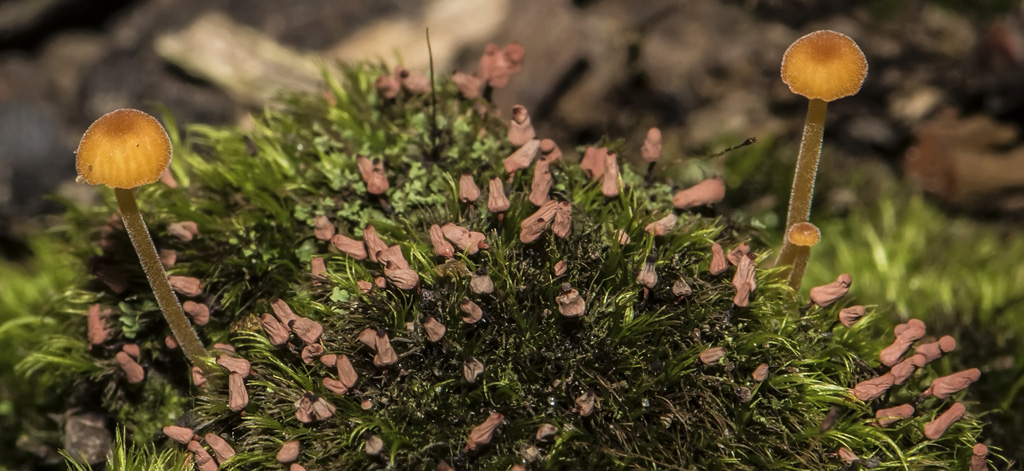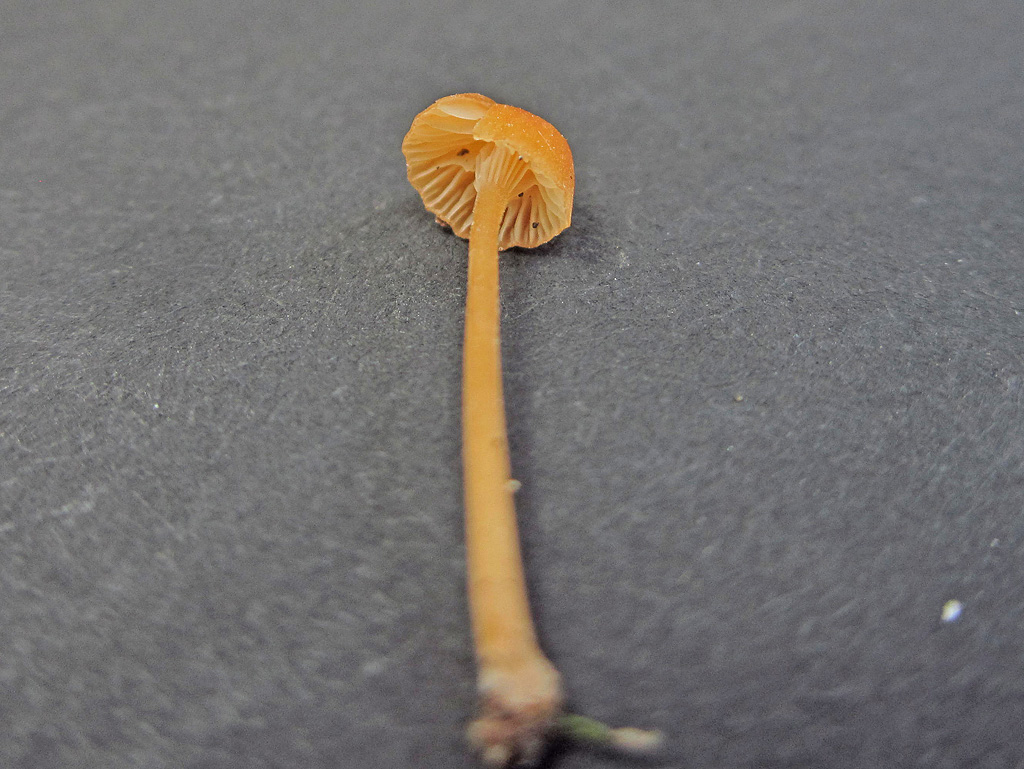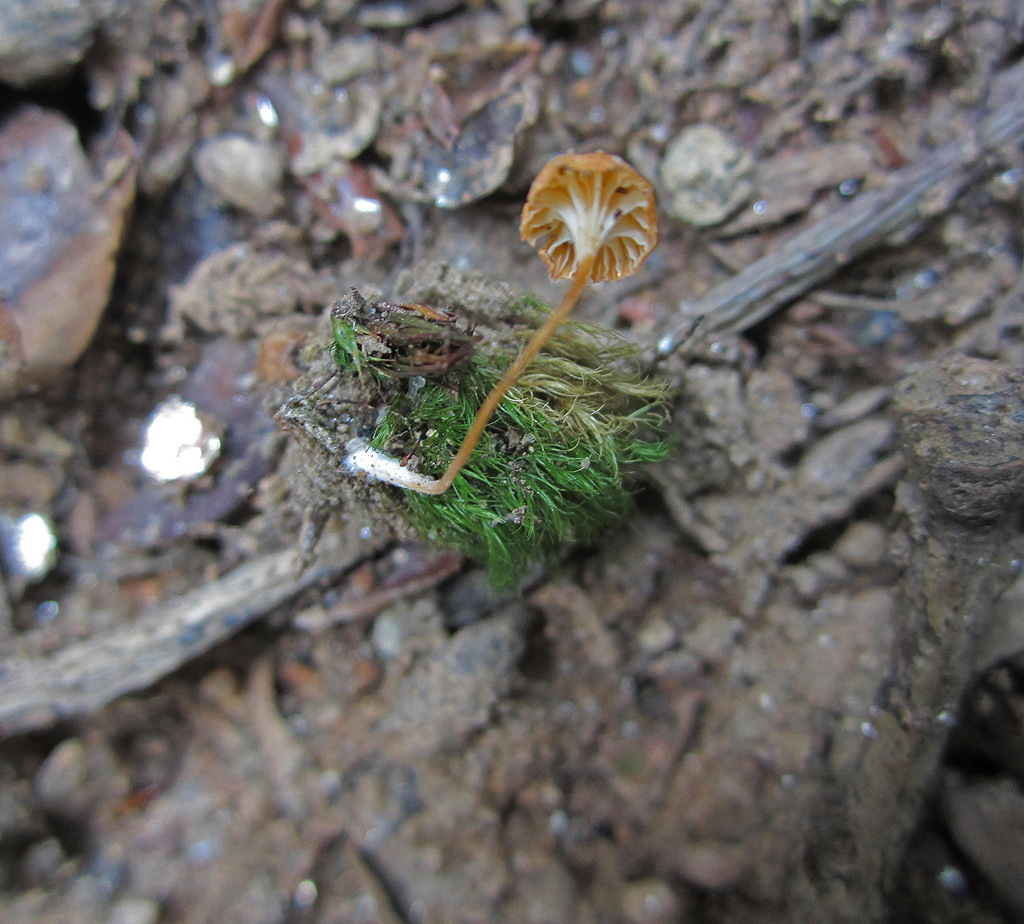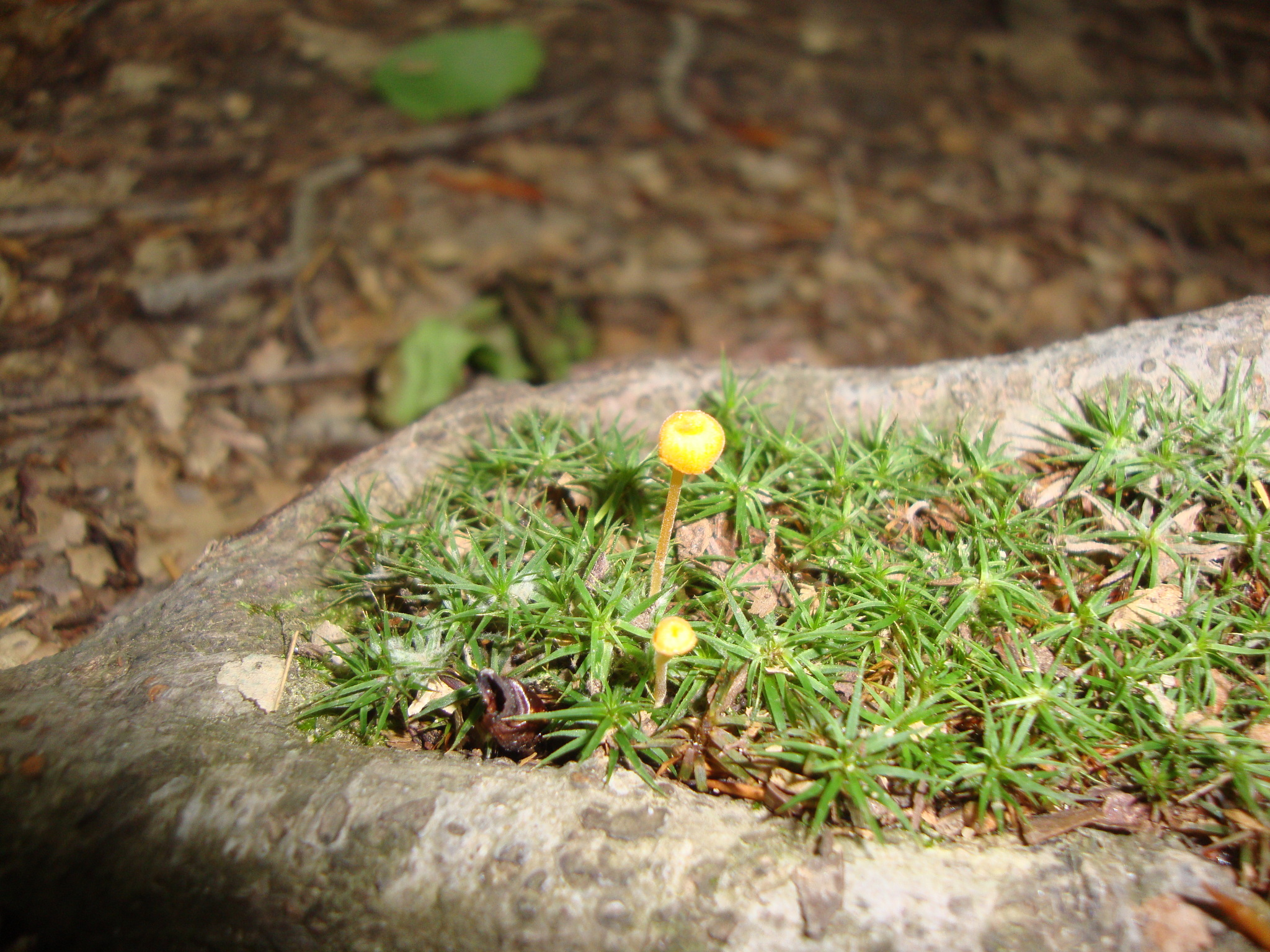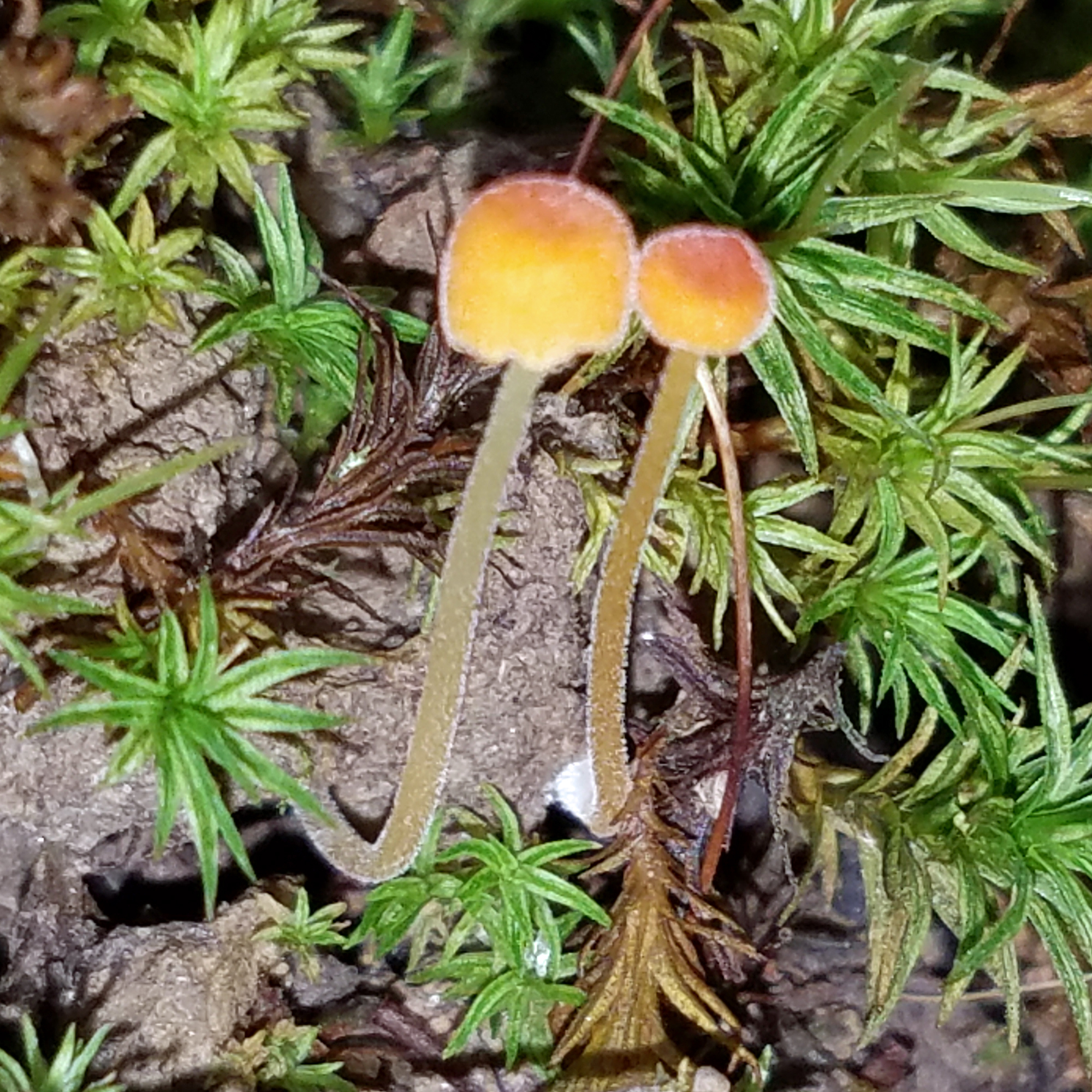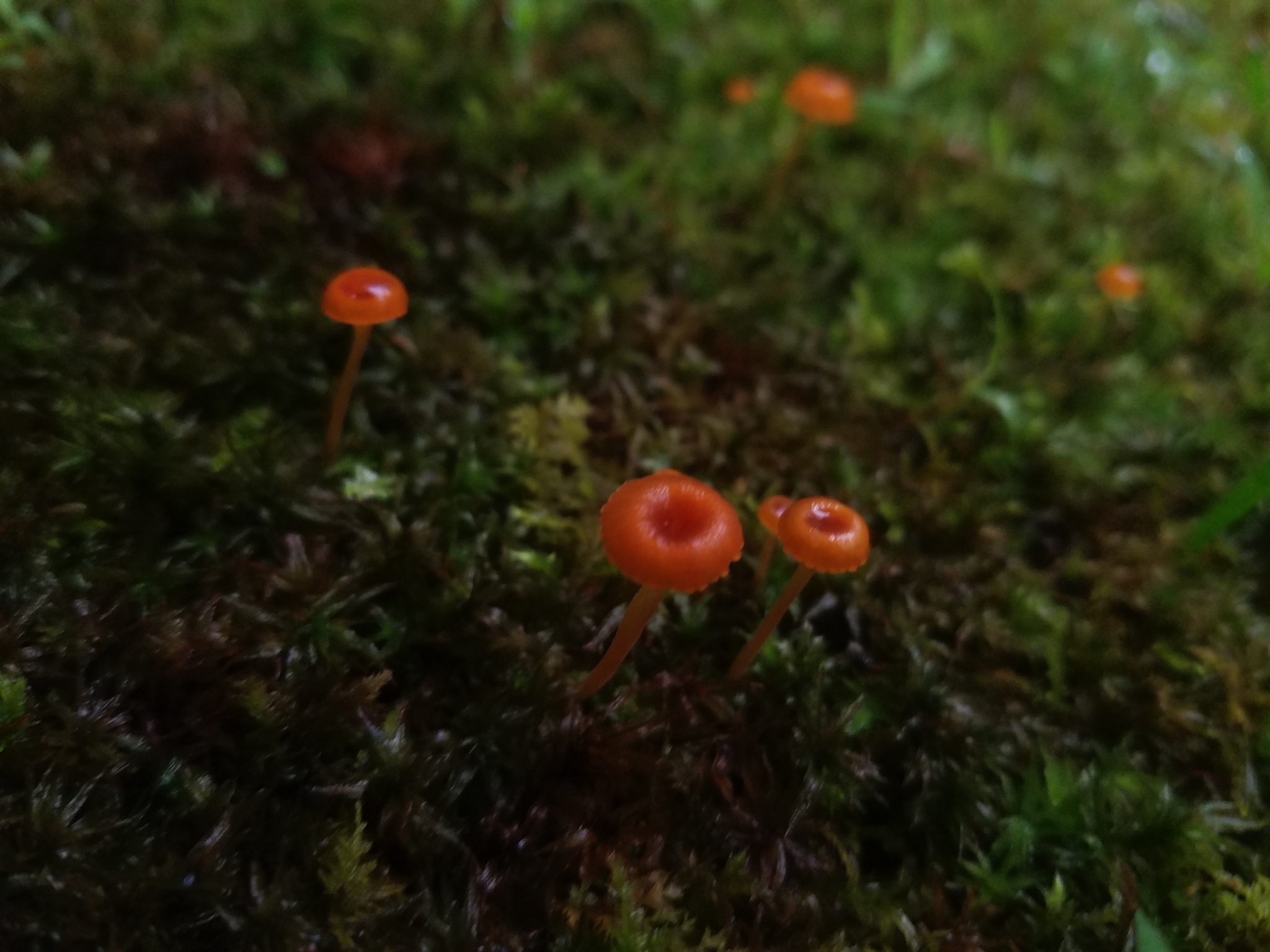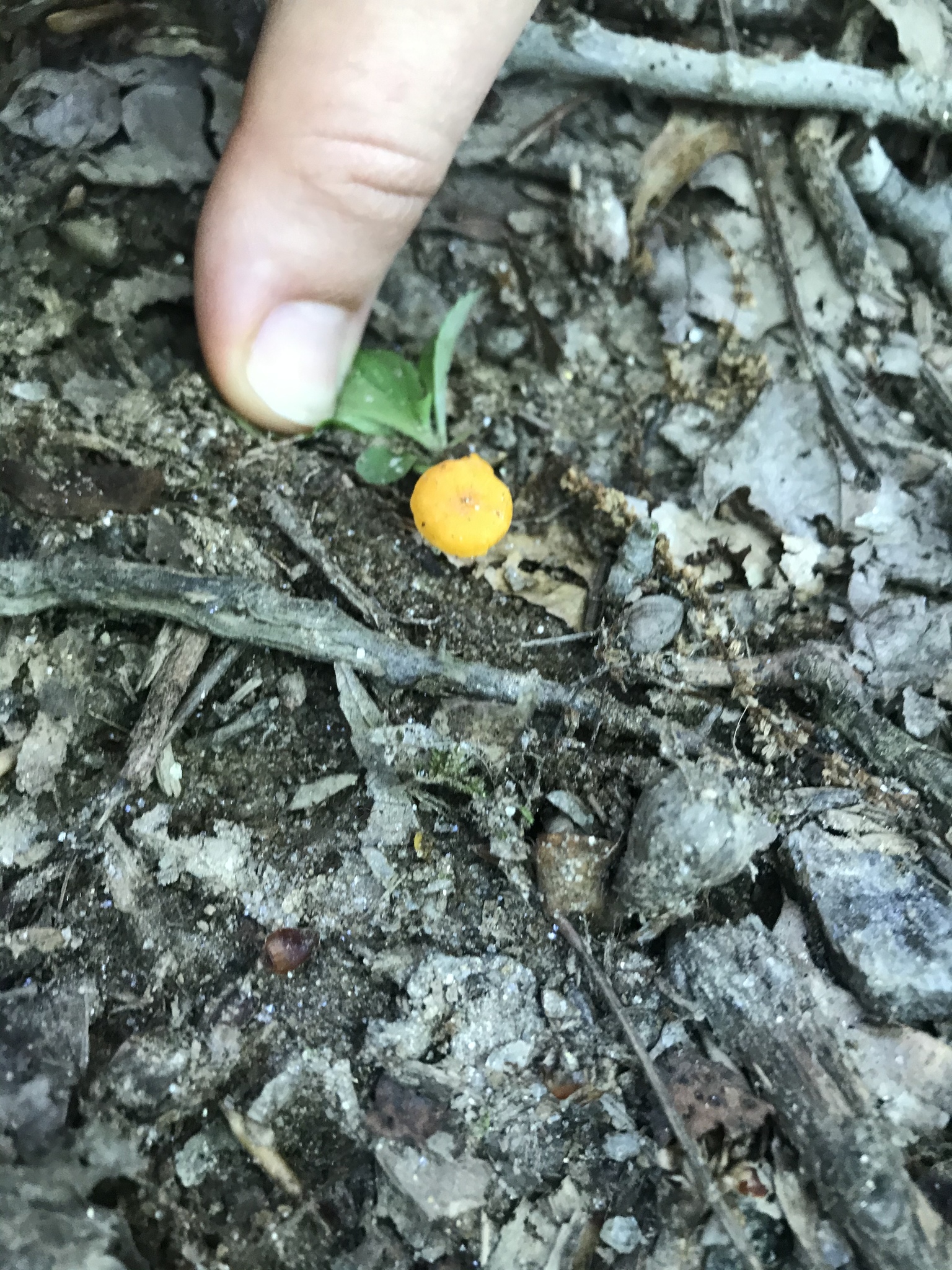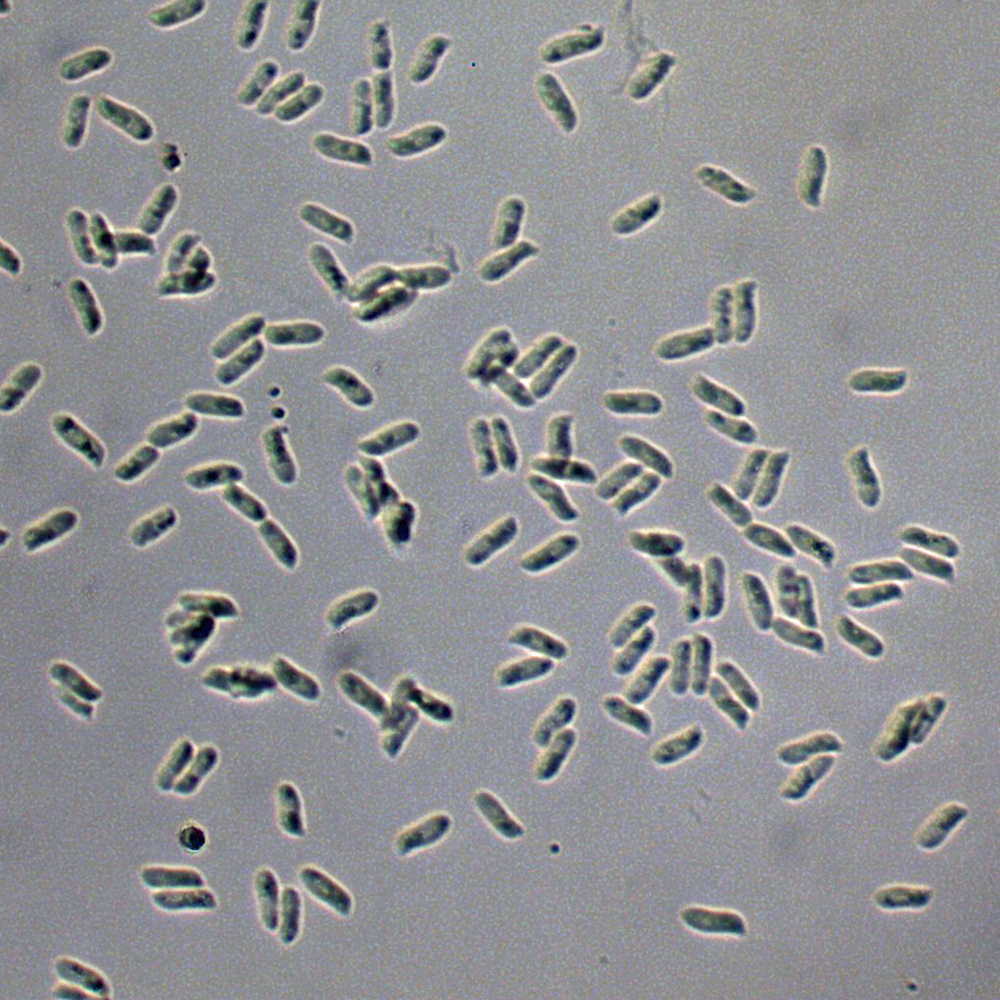Map Snapshot










30 Records
Status
Found in singles or in groups; always in moss.
Description
Cap: Orange to yellow-orange; convex with depressed center and striate margin; may be as small as 1/8". Gills: White, distant, decurrent. Stalk: Color similar to cap, finely hairy with white mycelium at base. (J. Solem, pers. comm.)
Seasonality Snapshot
Source: Wikipedia
| Rickenella fibula | |
|---|---|

| |
| Scientific classification | |
| Kingdom: | |
| Division: | |
| Class: | |
| Order: | |
| Family: | |
| Genus: | |
| Species: | R. fibula
|
| Binomial name | |
| Rickenella fibula (Bull.) Raithelh. (1973)
| |
| Synonyms | |
| Rickenella fibula | |
|---|---|
| Gills on hymenium | |
| Cap is depressed or infundibuliform | |
| Hymenium is decurrent | |
| Stipe is bare | |
| Spore print is white | |
| Ecology is saprotrophic | |
| Edibility is unknown | |
Rickenella fibula or Omphalina fibula, and commonly known as the orange moss navel[1] is a species of fungus belonging to the genus Rickenella.
The fruit body is orange to yellow and occurs among moss, which is why it is sometimes called moss sentinel.[2] The cap is quite small, with a diameter usually less than 1 centimetre (3⁄8 in).[3] The stipe is relatively long,[2] about 1.5–4.5 cm (5⁄8–1+3⁄4 in).[4] It has little odor or taste, and is regarded as nonpoisonous.[5] The spore print is white.[4]
Similar species
[edit]According to molecular analysis, the species is more closely related to certain polypores and crust fungi than other gilled mushrooms.[2] A similar species is Rickenella swartzii.[2]
It may resemble its relative Loreleia marchantiae as well as Mycena acicula and Entoloma unicolor. The stems of Xeromphalina are darker.[4]
References
[edit]- ^ "iNaturalist". iNaturalist. Retrieved 2023-12-27.
- ^ a b c d Trudell, Steve; Ammirati, Joe (2009). Mushrooms of the Pacific Northwest. Timber Press Field Guides. Portland, OR: Timber Press. p. 132. ISBN 978-0-88192-935-5.
- ^ Grand guide encyclopédique des champignons, Jean-Louis Lamaison
- ^ a b c Audubon (2023). Mushrooms of North America. Knopf. p. 133. ISBN 978-0-593-31998-7.
- ^ Miller Jr., Orson K.; Miller, Hope H. (2006). North American Mushrooms: A Field Guide to Edible and Inedible Fungi. Guilford, CN: FalconGuide. p. 187. ISBN 978-0-7627-3109-1.
External links
[edit] Media related to Rickenella fibula at Wikimedia Commons
Media related to Rickenella fibula at Wikimedia Commons
